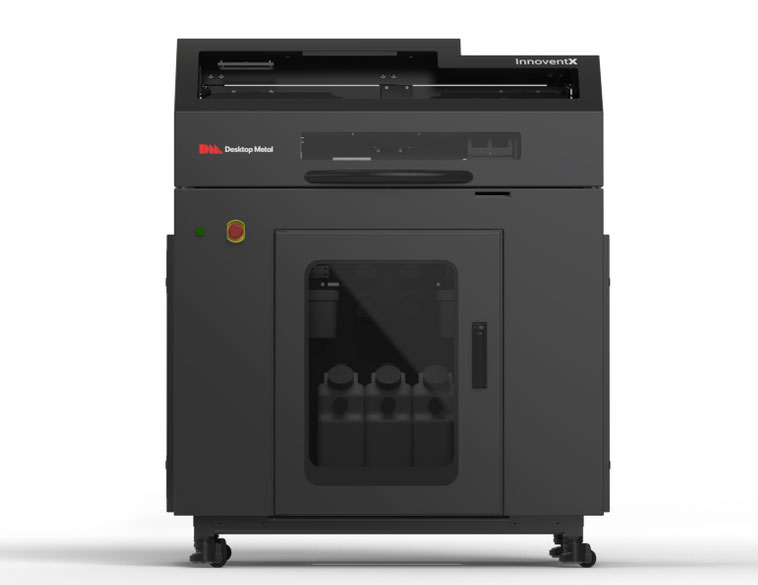Editor’s Pick: New binder jet line for extreme accuracy
Also, the company says its commitment to open materials gives users flexibility to choose the exact metal or ceramic that best meets production needs.

The Desktop Metal X-Series brings tight dimensional control and world-class surfacing quality to binder jet 3D printing of metal and ceramics. Image courtesy of Desktop Metal.
Latest News
March 16, 2022
Desktop Metal introduces the X-Series, three 3D printing platforms for production-quality additive manufacturing in ceramics and metal.
The three models are the InnoventX for entry-level; the X25Pro for mid-sized production; and the X160Pro with a large build box. Desktop Metal says all three use industrial piezoelectric print heads and the company’s Triple ACT method—Advanced Compaction Technology. This new technology dispenses, spreads and compacts ultra-fine powders with tight parameter control. Triple ACT works with various open materials in metal and ceramic.
The company says its commitment to open materials gives users flexibility to choose the exact metal or ceramic that best meets production needs. Possibilities include stainless steels, tool steels, nickel alloys, aluminum and titanium alloys, metal composites and ceramics such as silicon carbide and aluminum-infiltrated boron carbide (B4C).
Desktop Metal says dimensional tolerances on all three printers can be controlled within 1% to 2.5% on a first print run. When optimized for production, the company says X-Series systems routinely achieve dimensional tolerances of less than 1%, while maintaining post-sintered densities from 97% to better than 99% for most metals.

The company says the Triple ACT and its improved binder placement “all but eliminate binder bleed and overspray.” This results in excellent edge definition and surface quality, with surface finish as low as 4 µm Ra.
There are three models. The InnoventX is a compact printer, which the company says is suitable for metal, ceramic or composite parts for research, prototyping or short-run production of small components. Build box size is 160x65x65 mm (6.3x2.5x2.5 in). Maximum build rate is 54 cc/hr.
The X25Pro is a mid-volume 3D printer. The company recommends it for research, prototyping, rapid product development, short-run production or continuous 24/7 production. Build box size is 400x250x250 mm (15.75x9.84x9.84 in). Maximum build rate is 1,200 cc/hr.

Desktop Metal says the X160Pro is the world’s largest binder jet 3D printer for metal, ceramic or composite parts production. The X160Pro is designed for continuous 24/7 production but can be used for other purposes. Build box size is 800x500x400 mm (31.5x19.7x15.8 in). Maximum build rate (65μm layer thickness) is up to 3,120 cc/hr.
All three printers are now available directly from Desktop Metal. More information including detailed spec sheets can be found here.
Sources: Press materials received from the company and additional information gleaned from the company’s website.
Subscribe to our FREE magazine, FREE email newsletters or both!
Latest News
About the Author
DE’s editors contribute news and new product announcements to Digital Engineering.
Press releases may be sent to them via [email protected].






